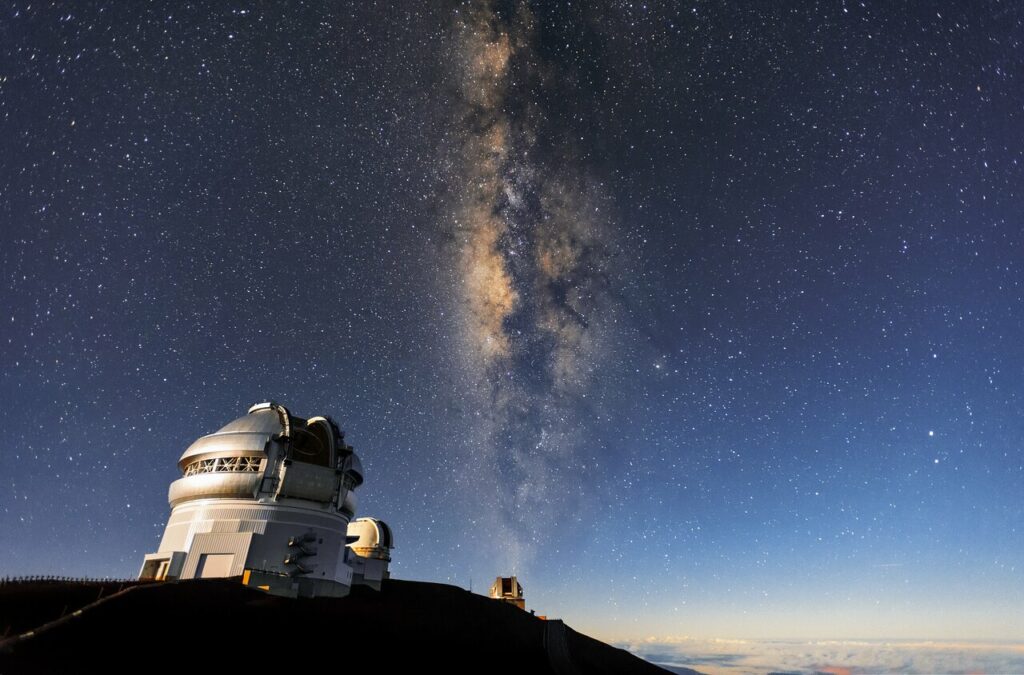The presented image was taken at an altitude of 4200 m above sea level on top of the extinct Hawaiian volcano Mauna Kea. This place is considered one of the best corners of our planet for hosting observatories. And even a cursory glance at the photo is enough to understand why.

The photo shows the night sky strewn with countless stars, among which the Milky Way band stands out. If you look at it through a telescope or long glass, it becomes obvious that it actually consists of a huge number of faint stars, indistinguishable separately to the naked eye.
The characteristic dark clumps and tendrils inside the Milky Way band are clusters of cosmic dust that block visible light emitted by background stars. Because of this, it gives the impression of “empty” areas in the sky, although this is not the case at all.
Fortunately, astronomers have ways to penetrate the dust and see what is hiding in the center of the Galaxy. For this purpose, shooting is used in other parts of the electromagnetic spectrum, in particular in the infrared range. Located at the top of Mauna Kea, the Gemini North telescope, which is also captured in the image, is just designed for such observations. The combination of an 8.1-meter mirror, adaptive optics and location make it one of the best ground-based astronomical instruments for studying our Galaxy.
You can also read about the recent discovery of the Gaia telescope, which found out that some parts of the Milky Way are older than they seem.
According to https://noirlab.edu
Follow us on Twitter to get the most interesting space news in time
https://twitter.com/ust_magazine
